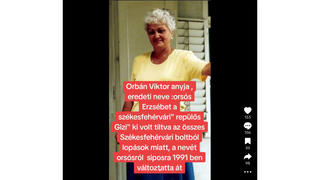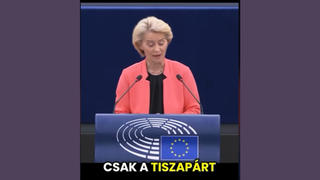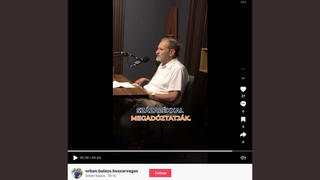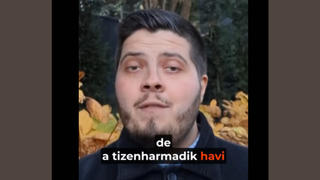
Is Pfizer-BioNTech's COVID-19 vaccine almost completely composed of graphene oxide, and is this part of a plot to carry out a "mass poisoning?" No, that's not true: The claim was featured on the Stew Peters Show, an internet-based program that distorted the findings of a Spanish scientist to support its mass-murder theory. Pfizer's COVID-19 shot does not contain graphene oxide.
The Stew Peters clip appeared in a video on TikTok on May 31, 2023, under the Hungarian-language caption "A pharmaceutical researcher reveals the composition of the vaccine on Canadian TV!" (Translation by Lead Stories.) It shows Peters, who is American, interviewing Dr. Jane Ruby -- whose archived LinkedIn page says she holds a doctorate in education, not medicine -- on July 5, 2021. Peters asks Ruby about the findings of the Spanish investigation into the contents of Pfizer's COVID-19 vaccine, saying:
You are now here, willing and ready to say that this is a hundred percent proof that this is nothing but mass poisoning -- mass murder -- genocide!
In her long reply, Ruby says:
Here's the shocking information... Out of each dose, there was six nanograms per uL [microliter] of RNA. You know how much graphene oxide was in there? 747 nanograms! Do the math, my friend! That is a percentage of 99.99103 percent! It's virtually 99.99 percent graphene oxide... Stew, this is going to tie directly to strokes, to the heart attacks, and we're giving this to pregnant mothers and babies? ...There's no other reason for this to be in here except to murder people.
Here is a screenshot from the video taken at the time of writing:

(Source: TikTok screenshot taken on Thu July 13 04:38:27 2023 UTC)
As Lead Stories reported on July 8, 2021, the "study" to which Ruby refers was actually a provisional report authored by Professor Pablo Campra of the University of Almeria, Spain. Campra was hired by anti-vax activist Ricardo Delgado in 2021 to examine a sample of what was purportedly the Pfizer vaccine.
Campra compared microscopy images from the sample with images of graphene. It appears Ruby was exaggerating the conclusion he reached:
The microscopic study of the sample provides solid evidence of the probable presence of graphene derivatives, although microscopy does not provide conclusive evidence. The definitive identification of graphene, oxidized graphene (GO) or reduced oxidized graphene (rGO) in the RD 1 sample requires the STRUCTURAL CHARACTERIZATION through the analysis of specific spectral patterns comparable to those published in literature and those obtained from the standard sample...
The analyses in this report correspond to ONE SINGLE SAMPLE, limited in total volume available for processing. It is therefore necessary to carry out a significant sampling of similar vials to draw conclusions that can be generalized to comparable samples, recording origin, traceability and quality control during storage and transport prior to analysis.
There is no proof that the vial Campra received was actually the Pfizer vaccine. In a tweet published on July 2, 2021, the University of Almeria stressed that Campra's work was "an analysis of a sample of unknown origin with total lack of traceability." (Translation by Google Translate.)
Ruby also uses questionable math to determine that Campra's sample was 99.99 percent graphene oxide, as she is describing nanograms -- a weight -- within a microliter, a liquid measure. In 2021, Daniel Kelly, an assistant chemistry professor at Indiana University, explained to Lead Stories that one microliter of pure water has a mass of about 1 milligram or 1 million nanograms. Therefore, 747 nanograms of material would make up 0.0747 percent of one microliter by weight. Moreover, if a vial actually contained 99.99 percent graphene oxide, it would be a dark grey solid, not a whiteish liquid.
Graphene oxide is not listed among the ingredients of the Pfizer COVID-19 vaccine on a U.S. Food and Drug Administration's fact sheet:
Pfizer-BioNTech COVID-19 Vaccine, Bivalent contains the following ingredients: messenger ribonucleic acid (mRNA), lipids (((4-hydroxybutyl)azanediyl)bis(hexane-6,1- diyl)bis(2-hexyldecanoate), 2 [(polyethylene glycol)-2000]-N,N-ditetradecylacetamide, 1,2-distearoyl-sn-glycero-3-phosphocholine, and cholesterol), tromethamine, tromethamine hydrochloride, and sucrose. Pfizer-BioNTech COVID-19 Vaccine, Bivalent for individuals 6 months through 11 years of age also contains sodium chloride.
More Lead Stories fact checks involving Stew Peters can be found here.












